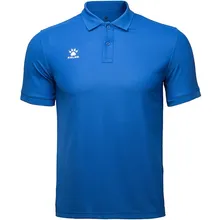Rubber Heat Transfer Labels: An Overview
Rubber heat transfer labels are a specialized category of branding materials used extensively in the textile and apparel industry. These labels are designed to be transferred onto fabric through a heat press process, creating a durable and long-lasting mark. Unlike traditional tags, rubber heat transfer labels offer a seamless and comfortable feel against the skin, making them ideal for clothing such as sportswear, undergarments, and children's apparel.
Types and Applications
There are various types of rubber heat transfer labels catering to different applications. Some are made for stretchable fabrics, while others are suited for more rigid materials. Their applications range from branding and sizing to care instructions and personalization. These labels are not just limited to clothing but are also used on accessories, luggage, and even furniture where a brand imprint is necessary.
Features and Materials
The materials used in rubber heat transfer labels are crucial for their flexibility and adherence to fabrics. Typically made from silicone or polyurethane, these labels are known for their resilience and ability to withstand multiple washes. The labels come in various finishes, including matte, glossy, and even textured, to enhance the tactile experience and visual appeal.
Advantages of Rubber Heat Transfer Labels
The advantages of using rubber heat transfer labels are manifold. They are incredibly versatile, allowing for a range of designs from simple logos to intricate patterns. The durability of these labels is another significant benefit, as they resist fading, peeling, and cracking. Additionally, the application process is straightforward, requiring only a heat press, which makes them a convenient option for mass production.
Customization and Brand Identity
Customization is a key feature of rubber heat transfer labels, enabling brands to create unique and recognizable identities. These labels can be tailored in shape, color, and size to meet specific branding requirements. They play a pivotal role in brand differentiation, as they help consumers easily identify the products of one brand from another.
Environmental Considerations
In today's eco-conscious market, the environmental impact of rubber heat transfer labels is also taken into account. Manufacturers are increasingly adopting eco-friendly practices, producing labels that are not only safe for consumers but also have a reduced impact on the environment. This shift towards sustainability is becoming a significant part of the product narrative.














































 浙公网安备 33010002000092号
浙公网安备 33010002000092号 浙B2-20120091-4
浙B2-20120091-4